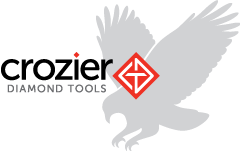Concrete, steel and stone are some of the hardest materials that we know of, and to be able to cut through materials such as these, you are required to utilise something harder than regular tools.
Diamonds are an incredibly strong material, despite their somewhat delicate appearance, and they are strong enough to enable you to cut through these materials. For this reason, they’re used extensively on materials which require heavy-duty and precise cutting. Here are three commonly asked questions regarding diamond tools.
1. What Is a Diamond Tool?
A diamond tool consists of a support blade and a drill tube which are paired with a cutting edge. Some segments of the cutting edge contain pieces of diamond. The majority of diamond tools are made from synthetically produced diamonds or naturally occurring diamonds which are not suitable for jewellery. The quality of the diamonds and the concentration of diamonds within each of the segments play a vital role in the tool’s performance.
Some common diamond tools include diamond blades, diamond drills, polycrystalline diamond (PCD cutting tool) and diamond grinding tools. It is imperative that the correct tools are utilised for the appropriate job. For example, an asphalt blade should not be utilised to cut concrete as the bond will be too hard for the material being cut.
2. What Are Diamond Tools Used For?
Because of the hardness of diamonds and also their high melting point, diamond tools are commonly used in the mining industry. These tools are typically used for drilling and geotechnical operations where high quality and reliability is required. They also play a vital role in protecting the environment as well as preventing excessive noise. Other uses include upgrading structures, strengthening seismically weak infrastructure and dismantling bridges and buildings.
Diamond tools have many advantages, such as having a high wear resistance, long lifespan, high grinding efficiency and a low comprehensive cost. These tools are regularly utilised in the manufacturing of mirrors and lenses, as well as glass drilling applications. Other uses include cutting various metals and polishing. Diamond tools are also highly effective in numerous plastic machining processes.
3. How Do You Care for Diamond Tools?
The correct installation of the blade is necessary for the tool to cut most effectively. If the blade has been installed incorrectly, the blade will wear much quicker and the result won’t be as precise.
Ensure your machine is serviced regularly and all parts of the machine are in good condition. Do not undercut. Undercutting can be caused by excessively cutting abrasive materials without sufficient coolant flow to wash away the fibres produced during the drilling process.
Whilst utilising a wet cutting blade, ensure that the water flow has been directed to both sides of the blade. However, if you are using a dry cutting blade, do not push too hard on the blade, but ensure that you lift the blade out of the cut every now and then to assist with the cooling of the blade.
During the operation of any tools, whether it be diamond tools or regular power tools, it’s vital to ensure that safety equipment, such as ear and eye protection, is worn at all times. It is also important to choose the right tool for the job. If you are unsure, research the products first or seek advice from a professional regarding which tool will be best suited to your needs.
Crozier Diamond Tools have over 15 years of experience in the Diamond Tool industry. They can provide you with top quality tools and expert guidance on selecting a tool and ensuring your blade performs effectively for many years to come.
